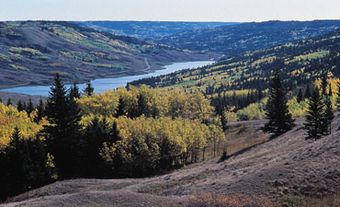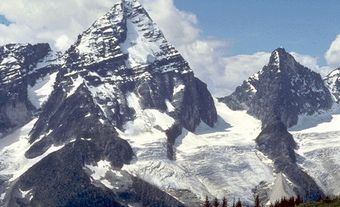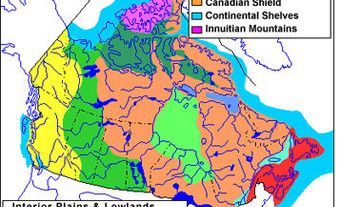This article was originally published in Maclean’s magazine on January 11, 1999. Partner content is not updated.
It was just past 1:30 a.m. on New Year's Day, and most of the residents of the isolated northern Quebec community of Kangiqsualujjuaq were celebrating in a school gym. People exchanged hugs and warm wishes as they listened to the draw for a $1,000 door prize. Then disaster struck.Avalanche in Quebec
It was just past 1:30 a.m. on New Year's Day, and most of the residents of the isolated northern Quebec community of Kangiqsualujjuaq were celebrating in a school gym. People exchanged hugs and warm wishes as they listened to the draw for a $1,000 door prize. Then disaster struck. An avalanche of snow three metres high hurtled down a steep hill behind the school and smashed into the building, tearing out a wall and burying many people inside. "It was like an explosion," said principal Jean Leduc. "You heard an immense crack and the wall was flying into pieces and, the next thing you knew, the gym was entirely covered in snow."
The avalanche suddenly exposed the 400 to 500 children and adults in the gym to the hostile weather outside - 100 km/h winds and a temperature of -20° C. Survivors who were not trapped by snow or parts of the crushed building grabbed shovels, frying pans, anything they could use to dig, and turned frantically to the rescue of family members and neighbours. Many just attacked the snow with bare hands. "Everybody was screaming," said school director Mary Baron, who had been sitting with her three-year-old son, Matthew. "I wasn't buried completely and right away went to dig out my son."
Baron was successful. But the rescuers soon found six bodies, then another three over the next hours, buried under deep piles of snow. Of the nine dead, five were children under the age of 8. Another 25 people were injured, 12 of them seriously enough to have to be airlifted 1,500 km to Montreal for treatment. Baron said several people around her were also half-buried. One by one they struggled free of the snow, then helped the others trapped around them. "Everyone is involved [in the rescue]," said Luc Harvey, chief of the Kativik regional police. "They are a self-reliant community. They are well-organized because they are an isolated town in the Far North."
Still, the tragedy left the village of 650 devastated. Through the night, people could be heard screaming and crying inside their houses. As dawn broke, the scope of the devastation became apparent. The remains of Satuumavik school lie just 300 m away from the base of the steep, 150-m hill that produced the disaster. Trucks and snowmobiles were tossed into the building as the avalanche ripped the gymnasium apart. Children's Christmas drawings were scattered in the snow.
Kangiqsualujjuaq, formerly known as George River, is on Ungava Bay at the mouth of the George River. A 25-bed hospital, the Ungava Tulattavik health centre in Kuujjuaq, 300 km to the west, handled the relatively minor injuries, while the other victims were flown by air ambulance to the Montreal General Hospital and Montreal Children's Hospital. Because of bad weather, doctors and nurses from the Tulattavik centre could not reach the scene until nine hours after the disaster, but they found the community coping well. "The people were just incredible," said Minnie Grey, executive director of the health centre. "They were devastated, but they were helping and supporting each other." Ten of the injured are children, she said, including a six-month-old baby who remained in Kangiqsualujjuaq. "One of the injured has respiratory problems and the rest have broken bones," Grey said.
Many residents recalled earlier snow slides around the village, but none that caused any damage or injuries. "Some parents have been concerned about children playing near the mountain," said Lorne Whiteley, who works at the Kativik school board maintenance department in Kuujjuaq. When the school was built in 1985, there were complaints that it was in the path of an avalanche that crashed down the same hill some years earlier. "We absolutely must pull out of there," said Leduc as he reviewed the tragedy.
Survivors of the latest snow slide speculated that it may have been triggered by lively dancing at the party, or by a New Year's gun salute fired roughly 90 minutes before the snow crashed down. Psychologists and psychiatrists were being sent to the village to help people cope with the disaster. And a Montreal spokesman for the provincial police, the Sûreté du Québec, said three investigators, three coroners and an avalanche expert were heading for Kangiqsualujjuaq to join others in trying to determine how the New Year's Day tragedy could have happened.
Maclean's January 11, 1999

 Share on Facebook
Share on Facebook Share on X
Share on X Share by Email
Share by Email Share on Google Classroom
Share on Google Classroom


